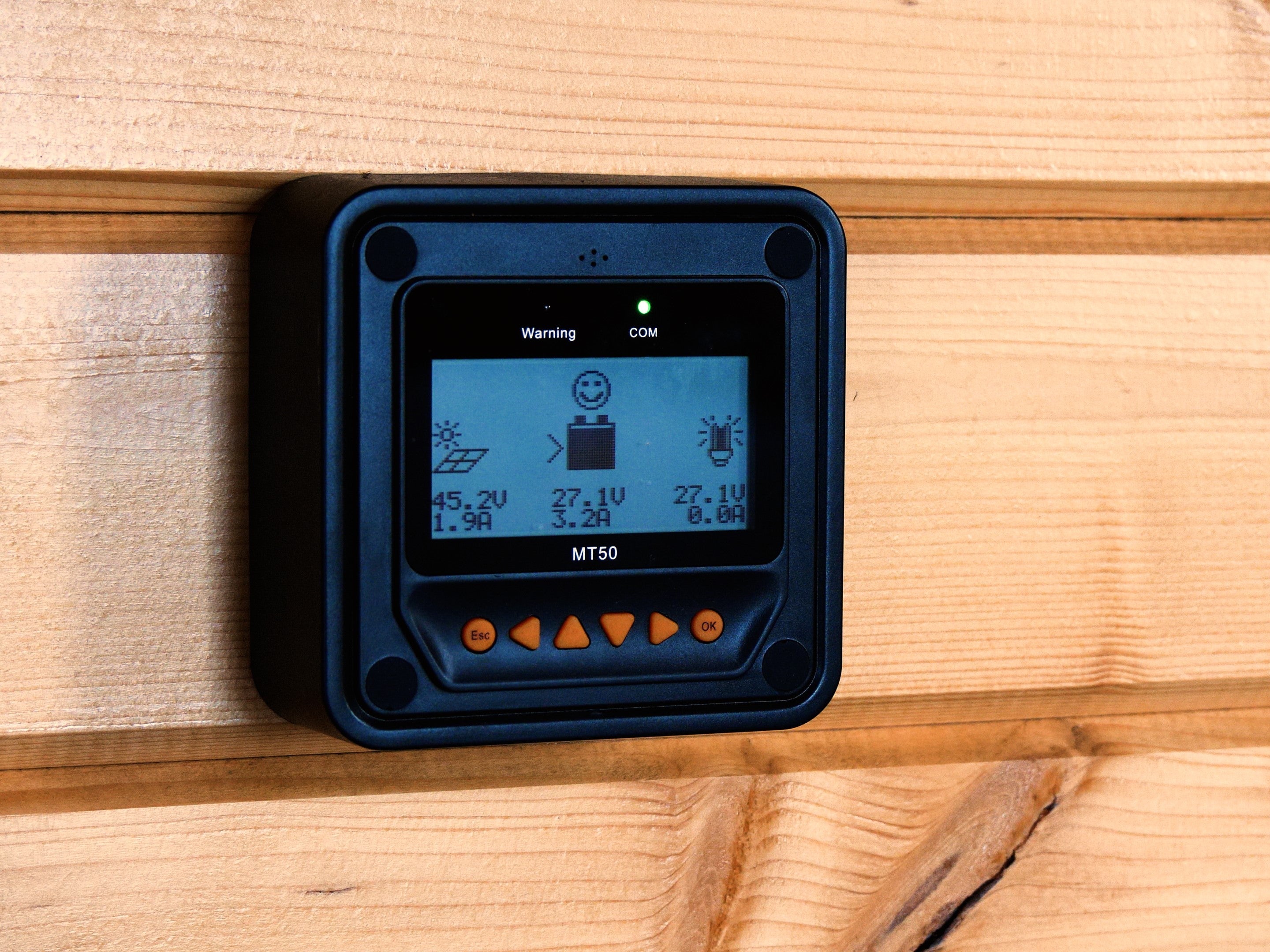When you have Gel batteries in a GridFree kit, it's important not to discharge them past 50% for their longevity, so you need to make sure you're checking regularly.
However, a common mistake new solar users will make with our kits is reading your Gel battery charge using the bars (for standard charge controllers) or percentage (for hybrid inverters) on screen.

These are misleading as they are imprecise and not a straight measure of how much energy is left in the battery like you might expect from your phone.
Instead, it's more reliable to read the voltage of the batteries, combined with the PV input. You should refer to the voltage-percentage conversion table we have included at the end of the installation instructions to get an approximation of how much usable battery is remaining. (You can use the percentage reading on the hybrid inverter for lithium batteries, as the Battery Management System does the work of interpreting the voltage.)
| Percentage | Voltage (24V Bank) | Voltage (48V Bank) |
| 100 | 25.5-30V | 51-60V |
| 90 | 25.25V | 50.5V |
| 80 | 25V | 50V |
| 70 | 24.7V | 49.5V |
| 60 | 24.5V | 49V |
| 50 | 24.3V | 48.5V |
The voltage will be higher than 25.5/51V when there is charge coming from the solar panels. Therefore, if the battery voltage displayed is a higher value than 25.5/51V, and there is less than 5A going into the batteries, the batteries will be at 100% charge.
You need to check the charge coming in from the solar panels, and the load being drawn, because these will affect the voltage of the battery bank. This is resting vs charging and discharging voltage.
Resting voltage is the true reading of the battery’s charge state. It refers to the voltage of the battery when there is no charge going in or out – the battery is at rest.
Charging voltage is the higher voltage the batteries will be at when they are charging. It’s easy to see this voltage and think the batteries are fully charged, but if the batteries are at a higher voltage and the amps are above 5, then it means the batteries are still charging.
Discharging voltage is the lower voltage the batteries will be at while you are using power. This may make you think the batteries are low, but if there is power being drawn, the batteries might not be as low as it seems. This is the reason why the cutoff voltage on Gel batteries is not set to 50%, as it might drop to past that while discharging and cause the system to shut off unnecessarily.
New users of the systems often have a slight panic when the sun goes down and they see the battery voltage drop down. This just means either they weren’t fully charged when the sun went down, or there is a load on the batteries drawing them down with no solar to offset it.
For the most accurate reading of your battery charge, turn off the breaker on the solar panels, and the breaker between the batteries and inverter (or from the panels and out to the switchboard for the hybrid), wait a couple minutes for the batteries to come closer to their resting voltage, then read the voltage of the batteries. You can then compare this to the percentage conversion chart above!


